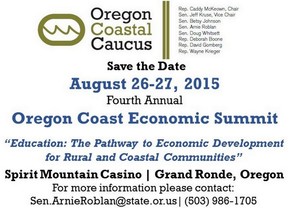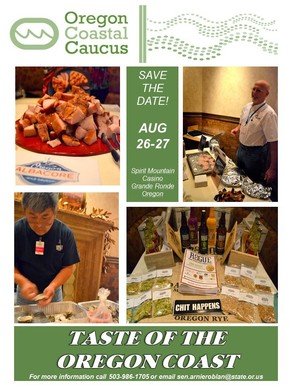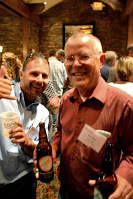Stories are a near universal aspect of human existence. They define who we are as a people, illustrate the values we hold as individuals, and provide a common medium by which to communicate the shared human experience. The more that I delve into my work and examine myself, the more I realize how integral storytelling is. On any given day, any single aspect of my work can ultimately be related back to some form of narrative, whether that is looking for a shared narrative or spinning some of my own novel yarns.
One way that we use stories is to connect the public, or some subset of it, to the places, resources, and activities that the Oregon Department of Fish and Wildlife (ODFW) manages on their behalf. By invoking imagery, cultural values, and common experiences associated with the resources that we manage, we are able to better communicate the results of our stewardship and inform the public.
A great example of this is the outreach and education materials that the Marine Reserves Program produces.You can check out some of their work on their website. Some of this material describes the structure of the program or the status of recent monitoring trips while others communicate issues of concern, like Ocean Acidification (OA). They have produced a wonderful the wonderful video below where you can learn about what causes it and how it relates to the Oregon coast and see many of the great people that I work with.
Sometimes the stories we tell are not to convey new information but demonstrate involvement and commitment to an issue. This last week, Cat Dayger and I have been editing press releases describing the work of the Ocean Acidification Alliance (alliance). The alliance is the nonprofit we helped launch to elevate OA on the international stage. The press releases are intended to highlight the West Coast regional efforts to address OA in light of the alliance attending the Ocean Conference hosted by the United Nations in New York this upcoming week.
The alliance, as well as California, Oregon, and Washington, are all making voluntary commitments towards Sustainable Development Goal 14.3 to continue their work on global ocean change and OA. The narrative here was not to tell a new story about OA but to keep the spotlight on the issue and communicate that work is underway to understand and address it. Sometimes the issues or status of a topic can be more effectively told not with words or other traditional media but through other means…
Everyone has heard the adage that “a picture is worth a thousand words.” Most people, however, don’t usually bring charts, tables, or maps to mind when they hear this phrase, let alone matrices or databases. But data is essentially the building block, or base-unit, that scientists work with. Every dataset has a story that it can tell and part of what scientists do is to use visual, mathematical, and statistical tools to piece together the plot points of a dataset’s story, identify its main characters, and expose the details hidden beneath the surface.
During my time with ODFW, I have been hard at work creating an interactive toolset to illustrate the story behind the Ocean Acidification and Hypoxia (OAH) Monitoring Inventory which is one of the main projects I work on. The OAH Monitoring Inventory is a catalog of monitoring assets (buoys, moorings, sensors, etc.) and research projects related to OAH that helps determine where OAH is already being monitored and where it needs to be monitored more. This is very similar to the inventory a restaurant manager takes at the end of a week before ordering more supplies. However, before we can decide where to place new instruments, we must understand the “lay of the land,” as it were, by identifying where assets are located, what they are collecting, and how long have they been there. These are are just a handful of the 70+ odd bits of descriptive information that were recorded. To communicate the complexities of this in a typical narrative would be almost certainly lose some of the finer details of the inventory’s story. Unfortunately, this interactive web app still needs some refining but I hope to be able to share it soon.
Storytelling is an innate practice permeating nearly every facet of our lives. When we are at home playing a game, reading a book, or watching netflix we are ‘listening’ to the tales presented before us. Moving out into the real world to telling stories with friends around a bonfire, tall tales on social media, or drafting a press release we move from consuming to weaving our own tapestries. Framing and polishing a narrative to reflect either how we want to be perceived or best fits the situational context. Medium is yet another facet that can change the experience. Some elements of a story will be more apparent in one format and lost via another. When watching a movie of a popular book your favorite character can take on an entirely new light due to how they are portrayed. With technical information this is no less true. The takeaways one has looking at a table of values will be far different than those represented on a map or plotted in a chart. All of these differences demonstrate how deeply saturated we are in stories and how they color our perceptions and, in turn, our own personal narratives.
I look forward to the opportunity to continue to ‘tell my tales’ here to you and to the audience of my professional work.







